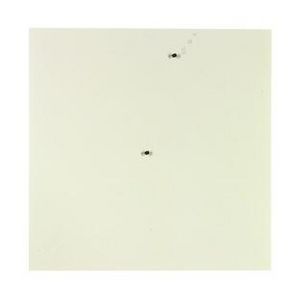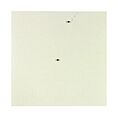Robert Ryman facts for kids
Quick facts for kids
Robert Ryman
|
|
|---|---|
| Born | May 30, 1930 Nashville, Tennessee, U.S.
|
| Died | February 8, 2019 (aged 88) New York City, U.S.
|
| Known for | Painting, Conceptual art |
Robert Ryman (May 30, 1930 – February 8, 2019) was an American painter. He was known for his unique abstract art. His paintings often featured white or off-white colors on different surfaces. People often connected his work to art styles like monochrome painting, minimalism, and conceptual art. He lived and worked in New York City.
Contents
Life and Art Journey
Early Life and Moving to New York
Robert Ryman was born in Nashville, Tennessee. He studied saxophone in college from 1948 to 1950. After that, he joined the United States army reserve band.
In 1953, Ryman moved to New York City. He wanted to become a professional jazz saxophonist. To earn money, he took a job as a security guard. He worked at the famous Museum of Modern Art (MoMA).
Discovering Painting
While working at MoMA, Ryman met other artists. These included Sol LeWitt and Dan Flavin. He also met Roy Lichtenstein during the 1950s.
Ryman became very interested in painting. He saw many amazing abstract expressionist artworks at MoMA. Artists like Mark Rothko and Jackson Pollock inspired him. In 1953, he bought art supplies and started painting in his apartment. He worked at MoMA until 1960 to be close to art.
Family and Famous Words
In 1961, Robert Ryman married art historian Lucy Lippard. They had a son named Ethan. Later, he married artist Merrill Wagner in 1969. Two of his sons from this marriage, Cordy Ryman and Will Ryman, are also artists today.
Ryman once said something famous about his art: "There is never any question of what to paint only how to paint." This means he cared more about how he painted than what he painted.
Robert Ryman passed away on February 8, 2019. He was 88 years old.
His Artworks
Painting Style and Materials
Many people called Ryman a minimalist artist. This means his art used very simple forms and colors. But Ryman preferred to call himself a "realist." He said he wasn't trying to create illusions. Instead, he wanted to show the real materials he used. He worked with real light and space in his paintings.
Most of Ryman's works are abstract. They often feature white or off-white paint. He used different surfaces like square canvas or metal. He loved to experiment with many materials. He painted on:
- Canvas
- Linen
- Steel
- Aluminum
- Plexiglas
- Vinyl
- Fiberglass
- Corrugated paper
- Burlap
- Newsprint
- Wallpaper
He also used many types of paint and drawing tools. These included oil, acrylic, pastel, and graphite.
Important Painting Series
In 1955, Ryman created an early important work. It was a mostly white painting called Orange Painting.
From 1968 to 1969, he made his Classico series. These were multi-panel paintings on a special paper called Classico. Ryman would attach the paper to a wall with masking tape. Then he painted it with shiny white acrylic paint. After it dried, he removed the tape. The edges of the paint showed where the tape had been. This showed the process of how he made the art.
His Surface Veil works from 1970 were named after the fiberglass he painted on. In these works, the white paint looked like a thin skin over the surface. You could sometimes see the fabric underneath. This showed where he paused while painting.
From 1975 to 2003, Ryman often used metal brackets. He designed these brackets to attach his paintings to the wall. Each set of brackets was unique for each artwork.
Prints and Drawings
Even though Ryman is famous for his paintings, he also made prints and drawings. He created etchings, aquatints, and lithographs. His prints look similar to his paintings. They are often square and mostly white. They explore different textures and effects of white on paper or aluminum.
Ryman wanted viewers to look closely at his prints. He said his titles were not important. He preferred to call them "names" for his artworks. He wasn't trying to make a picture of something. He was just showing the materials themselves. The "names" of his works often came from art supplies or general words.
Art Shows and Collections
Exhibitions Around the World
Robert Ryman had his first art show in New York City in 1967. He was 36 years old. The next year, he had a show in Germany.
His first museum show was in 1972. It was at the Solomon R. Guggenheim Museum in New York. This show displayed 38 of his works. His art was also shown at important events like the Venice Biennale.
In 1993-1994, a very large show of Ryman's paintings traveled to many museums. It went to the Tate Gallery in London and the Museum of Modern Art in New York.
Where to See His Art
The Hallen für Neue Kunst museum in Switzerland used to have the largest public collection of Ryman's work. They had 29 of his pieces.
In 2017, Ryman gave 21 paintings to the Dia Art Foundation. This made it a special place to see many of his works. Other major museums that have his art include:
- The Museum of Modern Art in New York
- The Tate in London
- The Art Institute of Chicago
- The Stedelijk Museum in Amsterdam
Images for kids
See also
 In Spanish: Robert Ryman para niños
In Spanish: Robert Ryman para niños



